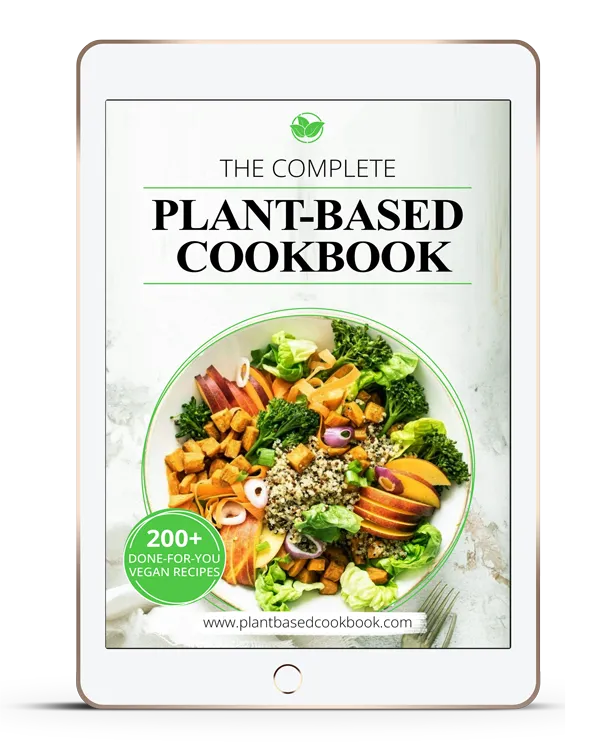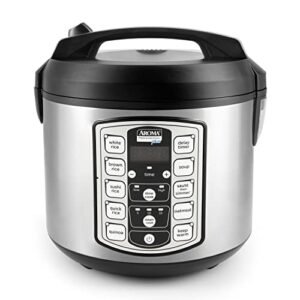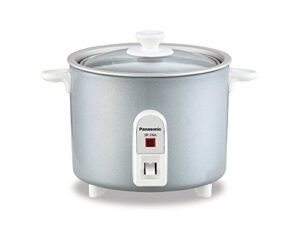Rice cookers have become a staple in many kitchens around the world, offering a convenient and foolproof way to cook rice to perfection. However, as with any electrical appliance, it is essential to follow certain safety precautions to avoid accidents and ensure your rice cooker functions efficiently. In this comprehensive guide, you will learn valuable tips and tricks for using your rice cooker safely.
Table of Contents
ToggleRice Cooker Safety Tips
1. Read the Manufacturer’s Instructions
Before using your rice cooker, it is crucial to familiarize yourself with the manufacturer’s instructions. These guidelines will help you understand how to use the appliance safely and effectively. Keep the manual handy for future reference.
2. Place the Rice Cooker on a Stable Surface
To avoid spills and accidents, always place your rice cooker on a stable, flat surface. Keep it away from the edge of countertops and out of the reach of children and pets.
3. Use the Correct Power Source
Ensure that the power source for your rice cooker matches the appliance’s voltage requirements. Using an incorrect power source can lead to overheating, electrical malfunctions, and even fires.
4. Keep a Safe Distance from Water
Never use your rice cooker near water sources or in damp environments, as this can cause electrical shock or damage to the appliance. Keep the cord and the rice cooker away from sinks, tubs, or pools.
Precautions Before Using Your Rice Cooker
1. Inspect the Appliance
Before using your rice cooker, make sure there are no visible signs of damage, such as frayed cords or cracked parts. If you notice any issues, contact the manufacturer for assistance or replacement.
2. Use the Right Amount of Water and Rice
Follow the manufacturer’s guidelines for the appropriate water-to-rice ratio, as overfilling or underfilling the cooker can cause spillage, uneven cooking, or even damage the appliance.
3. Rinse the Rice
Rinsing the rice before cooking removes excess starch, which can cause the rice to stick together or to the bottom of the cooker. Place the rice in a fine-mesh strainer and run it under cold water until the water runs clear.
Using the Rice Cooker Properly
1. Ensure the Lid is Secure
Always make sure the lid is securely in place before turning on your rice cooker. A loose lid can result in steam escaping, which can cause burns or spills.
2. Use the Correct Cooking Settings
Select the appropriate cooking setting for your rice type, as different grains require different cooking times and temperatures. Refer to the manufacturer’s instructions for guidance on selecting the right setting for your specific rice variety.
3. Avoid Overloading the Rice Cooker
Do not exceed the maximum capacity of your rice cooker, as overloading can lead to spills, uneven cooking, or even damage to the appliance. Check the manufacturer’s guidelines for the recommended capacity.
4. Allow the Rice to Rest
After the cooking cycle is complete, let the rice rest for a few minutes before opening the lid. This allows the steam to dissipate and the rice to settle, ensuring evenly cooked and fluffy rice.
Cleaning and Maintenance
1. Unplug the Rice Cooker
Before cleaning your rice cooker, always unplug it and allow it to cool down. This prevents the risk of electrical shock and makes it safer to handle.
2. Clean the Inner Pot and Accessories
Remove the inner pot and any accessories, such as the measuring cup or paddle, and wash them with warm, soapy water. Avoid using abrasive cleaners or sponges, as they can scratch the non-stick surface of the inner pot.
3. Wipe the Exterior
Use a damp cloth to gently wipe the exterior of the rice cooker, removing any spills or stains. Be careful not to allow water to enter the electrical components of the appliance.
4. Regularly Inspect the Rice Cooker
Regularly inspect your rice cooker for signs of wear and tear, such as frayed cords or cracked parts. If you notice any issues, contact the manufacturer for assistance or replacement.
Choosing the Right Rice Cooker
When it comes to ensuring a safe and efficient rice cooking experience, selecting the right rice cooker is crucial. In this section, I will guide you through the key factors to consider when purchasing a rice cooker, helping you find the perfect appliance that meets your needs while prioritizing safety and convenience.
1. Consider the Size
When choosing a rice cooker, it’s essential to select one with the appropriate capacity for your household’s needs.
Smaller models, typically with a capacity of 1 to 3 cups, are perfect for singles or couples who don’t require large quantities of rice. On the other hand, larger options, with capacities ranging from 6 to 10 cups or more, are ideal for families or those who frequently entertain guests. By selecting a rice cooker with the right size, you can avoid wasting energy and resources while ensuring your appliance meets your specific requirements.
2. Look for Safety Features
Prioritizing safety is crucial when selecting a rice cooker. Choose a model that includes safety features such as an automatic shut-off function, which turns off the appliance once the cooking cycle is complete, reducing the risk of overheating or burns.
A stay-cool exterior is another valuable feature, as it keeps the outer surface of the rice cooker cool to the touch, preventing accidental burns when handling the appliance during or after cooking.
3. Opt for Non-Stick Coating
A non-stick inner pot is a must-have feature for easy rice cooker maintenance. This coating ensures that the rice doesn’t stick to the bottom of the pot, making it much easier to clean and maintain.
Additionally, a non-stick surface reduces the likelihood of burnt rice, which can not only ruin your meal but also damage the appliance. When selecting a rice cooker, look for models with a durable non-stick coating, such as ceramic or Teflon, to ensure long-lasting performance and easy cleaning.
4. Consider Extra Functions
While the primary purpose of a rice cooker is to cook rice, some models come with additional functions that can provide added convenience and versatility in the kitchen. Features such as steaming or slow cooking capabilities allow you to prepare a variety of dishes, making your rice cooker an even more valuable appliance. Other extra functions to consider include:
- Delay timer: This feature lets you set the rice cooker to start cooking at a later time, ensuring freshly cooked rice is ready when you need it.
- Keep-warm function: This function maintains the rice at an optimal serving temperature for an extended period, perfect for when you’re not ready to serve immediately after cooking.
- Adjustable cooking settings: Some rice cookers have settings for different rice varieties, such as white, brown, or sushi rice, allowing for precise cooking times and temperatures for the perfect result.
By considering the size, safety features, non-stick coating, and extra functions when choosing a rice cooker, you can find the perfect appliance that not only ensures safe and efficient cooking but also adds convenience and versatility to your kitchen.
Key Takeaways
- Always read the manufacturer’s instructions before using your rice cooker.
- Place the rice cooker on a stable surface, away from water sources and the edge of countertops.
- Use the correct power source and follow the manufacturer’s guidelines for the appropriate water-to-rice ratio.
- Rinse the rice before cooking and ensure the lid is securely in place.
- Allow the rice to rest after cooking, and avoid overloading the cooker.
- Regularly clean and inspect your rice cooker to keep it functioning efficiently and safely.
- Choose a rice cooker with the right capacity, safety features, and extra functions that suit your needs.
| Section | Key Points |
|---|---|
| Rice Cooker Safety Tips | 1. Read the manufacturer’s instructions 2. Place on stable surface 3. Use correct power source 4. Keep away from water |
| Precautions Before Use | 1. Inspect the appliance 2. Use the right water-to-rice ratio 3. Rinse the rice |
| Using the Rice Cooker Properly | 1. Ensure a secure lid 2. Use correct cooking settings 3. Avoid overloading 4. Allow rice to rest |
| Cleaning and Maintenance | 1. Unplug before cleaning 2. Clean inner pot and accessories 3. Wipe the exterior 4. Regularly inspect |
| Choosing the Right Rice Cooker | 1. Consider size 2. Look for safety features 3. Opt for non-stick coating 4. Consider extra functions |
By following these rice cooker safety tips and precautions, you can ensure that you not only cook delicious rice but also maintain a safe and efficient kitchen environment. Remember to handle your rice cooker with care, follow the manufacturer’s guidelines, and prioritize safety to avoid accidents or damage to your appliance. With the right knowledge and practices in place, you can enjoy perfectly cooked rice every time and make the most of your rice cooker’s potential.





